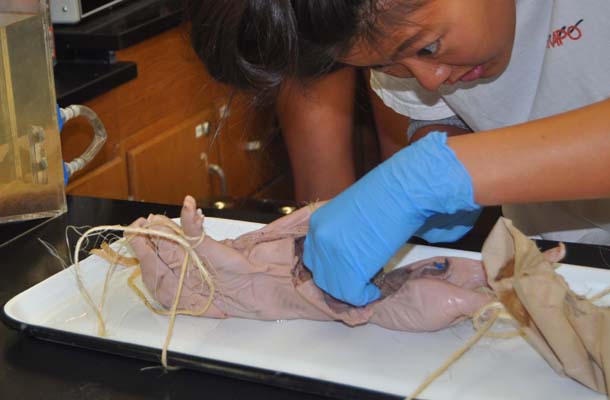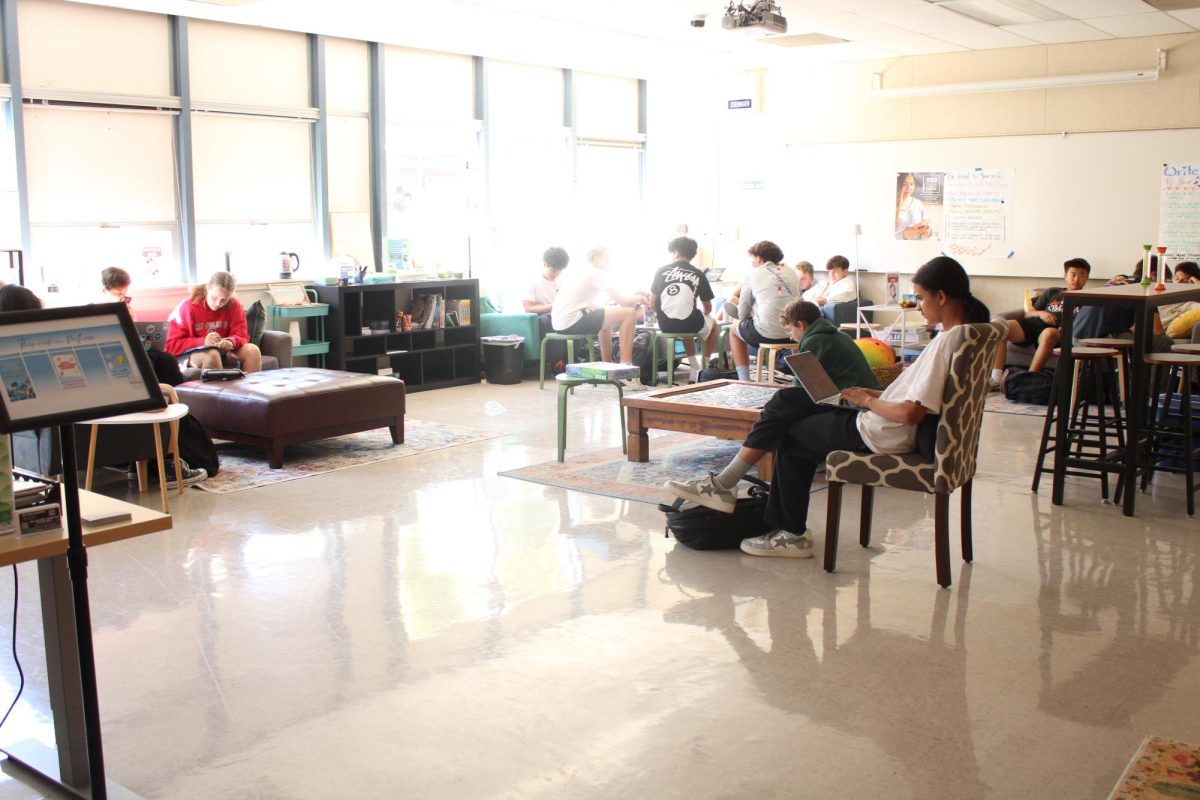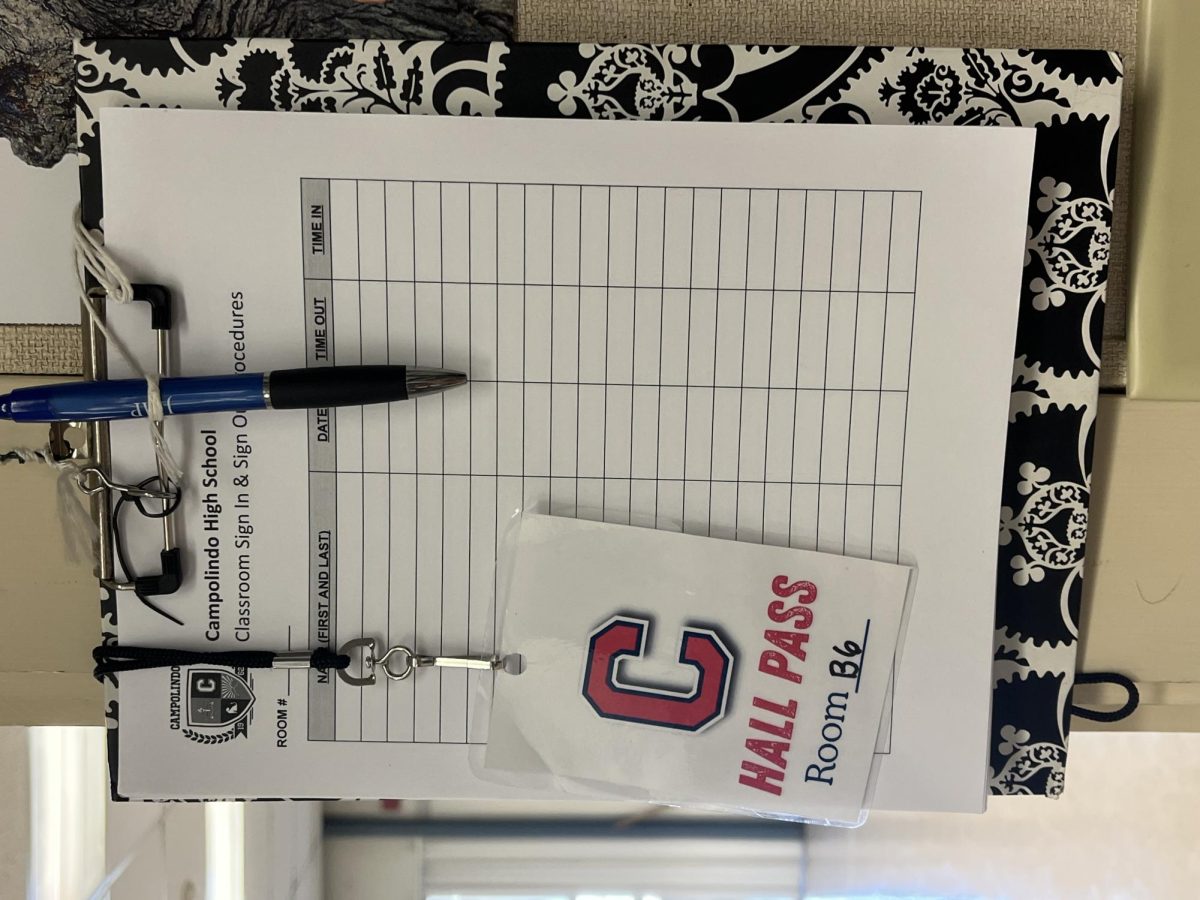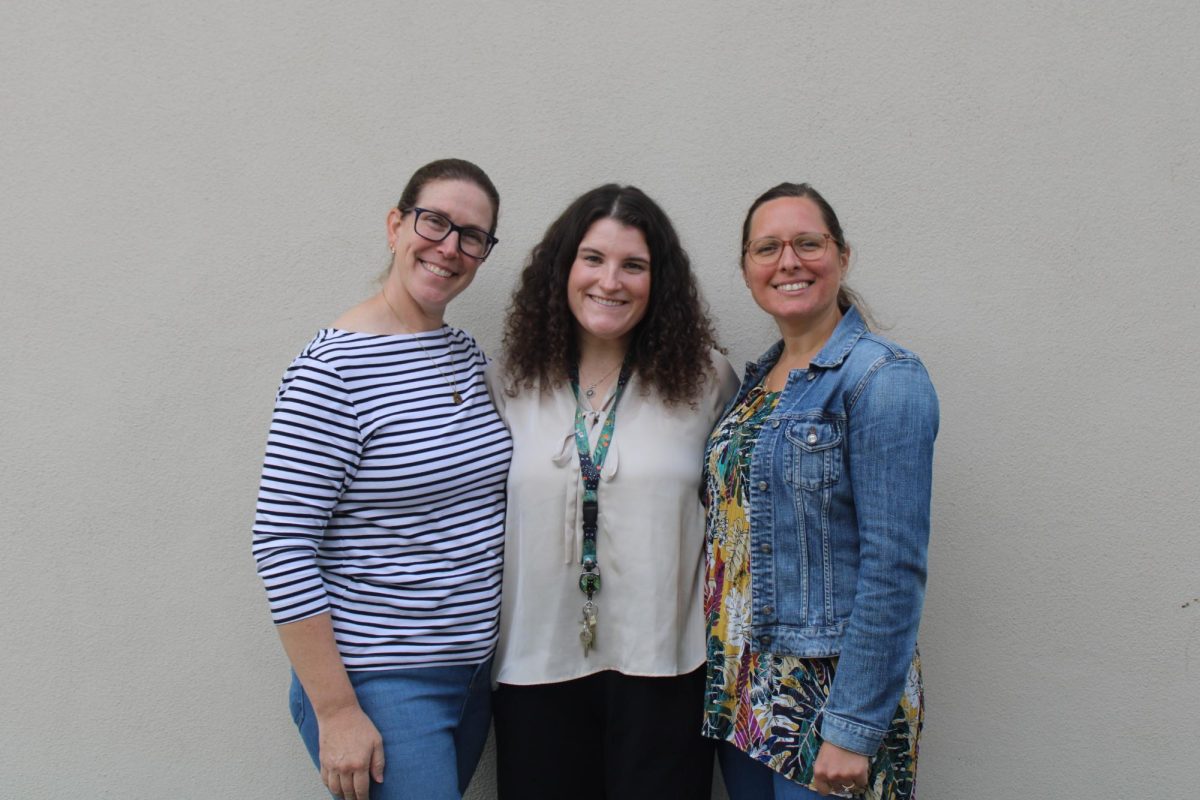Rene Gillibert’s AP Biology class dissected fetal pig carcasses as part of their human anatomy unit starting on Monday, May 18.
Gillibert said that the purpose of the dissection was to provide an interactive component to the unit. “We learned about a lot of the internal parts of humans. By dissecting a pig, we can see what those parts actually look like in a living mammal, which is very similar to those inside a person.”
Junior Ashley Lok thought the dissections were helpful. “The fetal pig dissection is a really good way of taking what we learned about the human body’s physiological processes and applying the information to understand how the body of a fetal pig performs the same processes on a smaller level,” she said. “We also learned about animal nutrition in class, so seeing a pig’s digestive tract physically really helped put that information in perspective and helped me understand how the body parts interact with one another.”
According to junior Jio Chang, the dissection process is extensive. “We’ve been doing little parts with the body, so we started with the mouth and we had to bake open the jaw,” she said. “Then we did the throat, the larynx and the vice box. Then we did the abdominal cavity, which was the liver and small intestine, and we had to take that out. Today we did the reproductive parts.”
Lok added, “We learned about the different body parts in greater detail and we learned about the process of dying the pigs’ veins and arteries once they were dead.”
“I want to be a doctor when I get older, so I feel like this project really confirmed that for me,” said Lok.
“In AP Biology we’ve done them every year,” said Gililbert. “They were done by the previous teacher as well. In fact, we used to do pigs for regular biology, until they got too expensive.
Gillibert bought the pig fetuses from a science supply company.
For Chang, the dissection was enjoyable. “It’s actually pretty fun,” she said. “I really liked dissecting the abdominal cavity. Katie Erickson, the senior, she unraveled the small intestine and it was 8 feet long. It was really cool.”
“My favorite part of the dissection was probably working with my partner and watching some of my class freak out over having to dissect the pigs,” said Lok. “I think it’s a really cool project to do especially if you’re interested in science. It was also really awesome to physically see all of an organism’s organs.
Unfortunately, not all parts of the dissection were glamorous. “It’s just the smell,” said Chang. “Everything else was fine. We can bring candles, so it doesn’t smell as bad.”
Lok agreed. “My least favorite part was hands down the formaldehyde smell,” she said. “I think anyone that steps into Mr. G’s classroom will understand why.”
Chang added that she also didn’t like “cutting through the bones. It makes noise when it cracks.”
Gillbert would have liked to have been able to dissect more animals this school year. He said, “I’d like to do an assembly of different animals. There’s 10 or 11 different main animal phyla. It would be cool if I would be able to do one of each.”
Chang thinks that the Physiology class’ “cats would be pretty cool.”
Lok said, “I would really like to dissect a frog or reptile because I’d like to see how their body parts are stationed in their bodies.” She added, “It’d also be really cool to dissect a human cadaver, just to see how we look on the inside.”






